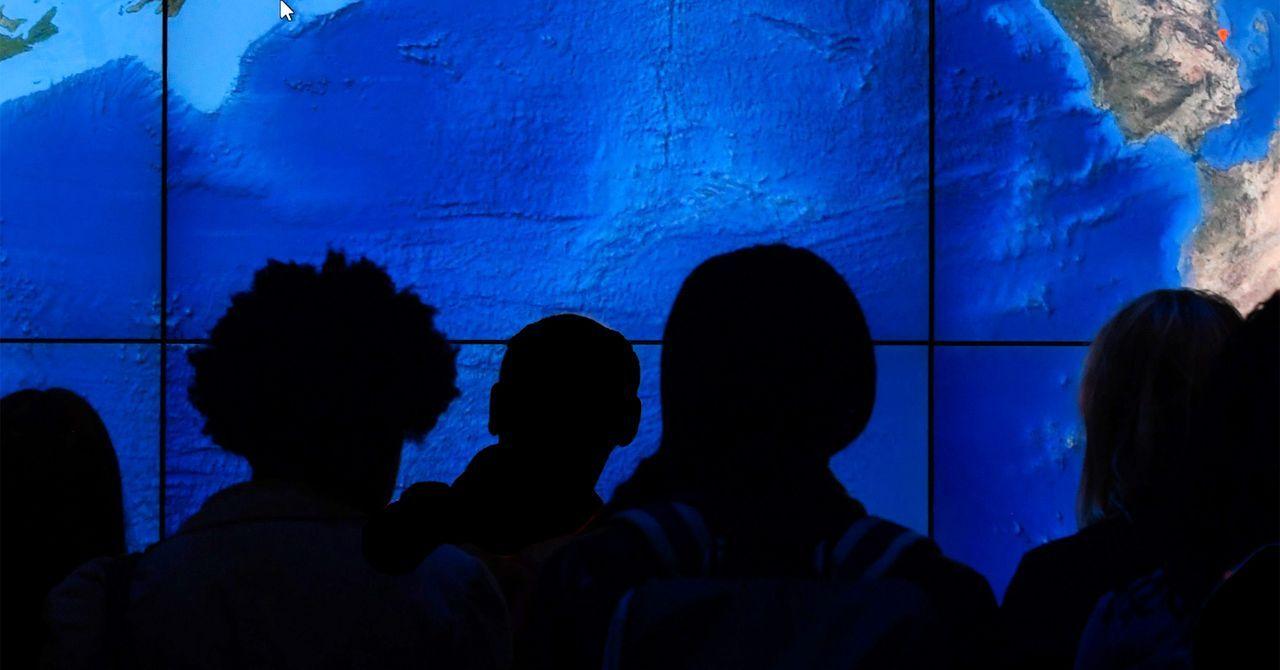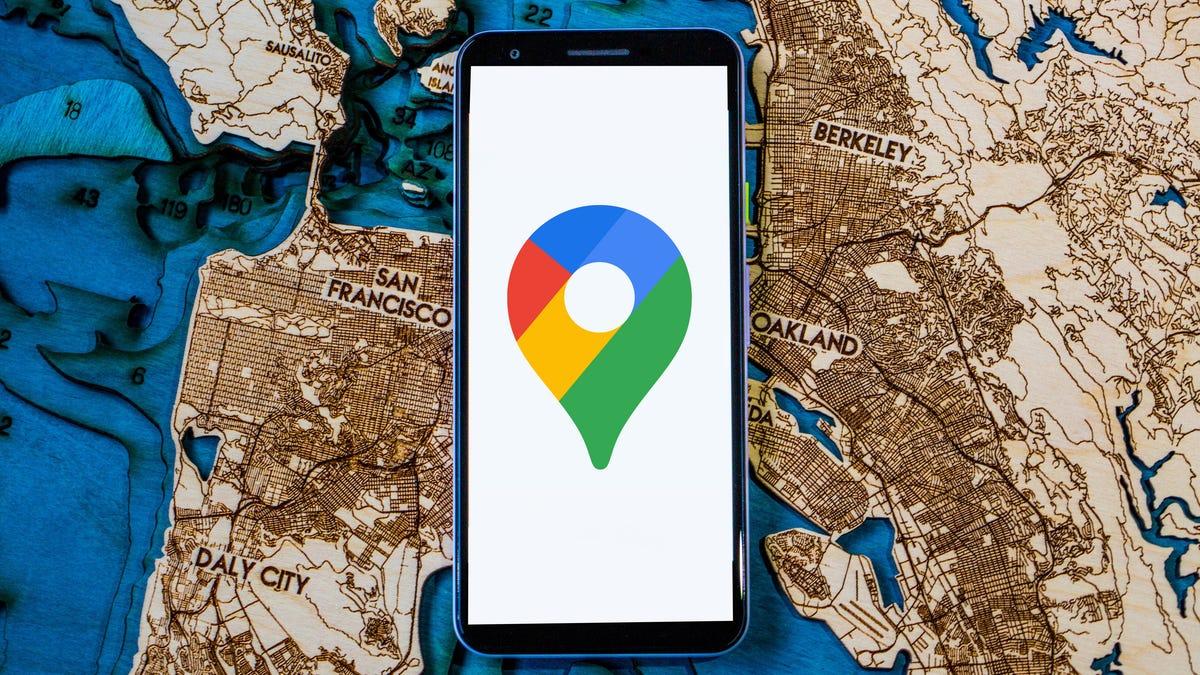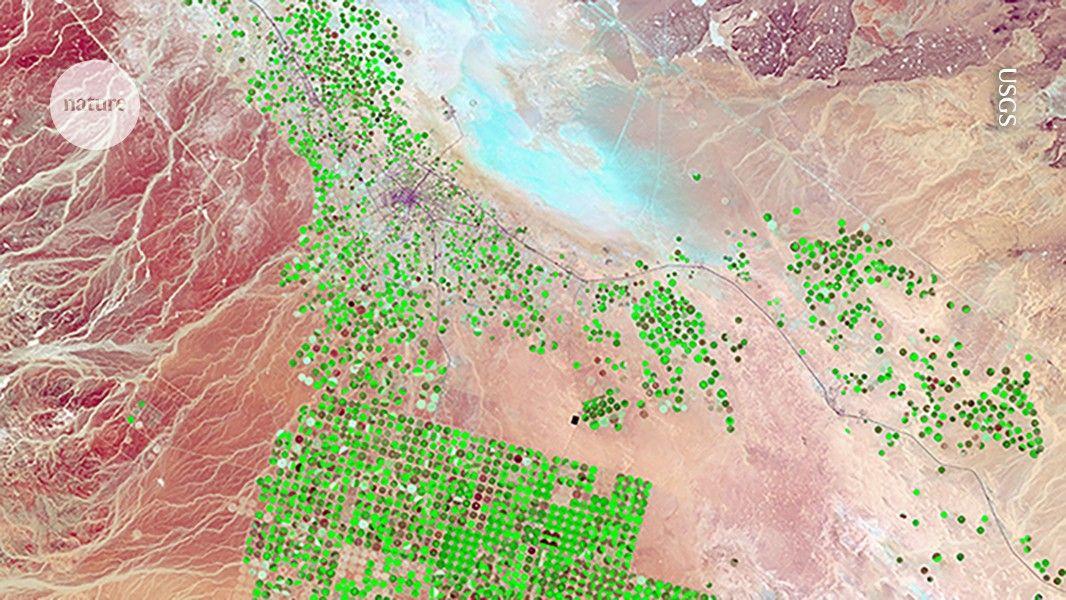Google Earth Unveils Time Travel Feature with Historical Imagery Dating Back to World War II
6 Sources
6 Sources
[1]
Google Earth will show historical imagery dating back to World War II
Google has just made the history and geography nerd in me very happy. The company has announced that Google Earth is getting historical imagery of areas through satellite and aerial captures dating back 80 years. Google previously released a Timelapse tool that shows satellite images from 1984 to 2022. The new shots will include everything from changes in a California reservoir over five years to images of cities like London, Berlin and Warsaw at the start of World War II. There are also photos of American cities like San Francisco in 1938 and images of the city in 2022. It reminds me of another site I've spent much too much time on, 1940s.nyc, which uses the NYC Municipal archives to show photographs of buildings from 1939 to 1941. In addition to letting me nerd out about changes in water lines and cityscapes, Google is introducing new Street View images across nearly 80 countries. These photos show places such as Logstor, Denmark (pictured above), Oaxaca, Mexico and Tasman, New Zealand. According to Google, its newest camera weighs 15 pounds and can be mounted onto any car, allowing the company to expand Street View even further. Currently, Street View has over 280 billion images. Then, of course, it wouldn't be a tech update in 2024 without mentioning AI. Google has trained its AI model Cloud Score+ to recognize and get rid of things such as mist, cloud shadows and haze while creating brighter, sharper images on Google Earth and Maps.
[2]
Google Earth lets you explore the past now, and Maps gets one of its biggest updates ever
Expect sharper images and better experiences with these updates, which include AI-enabled enhancements. Whether you're looking up the storefront of a specific restaurant or exploring a continent virtually, Google Maps and Google Earth are great tools for viewing a part of the world from your device. Now both applications are getting updates to make what you see even better. Also: 88% of US parents see AI as essential to their children's education On Wednesday, Google announced three new updates for Google Earth and Maps to enrich the user viewing and exploring experience. The first update is the availability of historical imagery on Google Earth, which allows users to explore Google's satellite and aerial imagery library from as far back as 80 years ago. Historical imagery showcases changes over time, especially in places like London, Berlin, Warsaw, and Paris, where you can see imagery from as far back as the 1930s. Google Earth is also getting a newly designed home screen to make it easier for researchers and organizations to use and collaborate with the tool for projects. For people who want to explore other places in the world today, Google is launching what it calls one of the biggest updates to Street View yet -- new street-view imagery from nearly 80 countries. This update lets users view more content in those countries taken by Google's Street View cars and trekkers. Also: Google Photos adds one-tap video editing for faster clip sharing, thanks to AI Lastly, it wouldn't be a Google update without incorporating artificial intelligence (AI). Starting this week, you will notice clearer and more vibrant images in Google Earth and Maps due to Google's AI-powered cloud-removal technology, which improves photos by removing unwanted distractions. Google says its Cloud Score+ AI model was trained on millions of images to identify elements that lower a picture's quality, such as clouds, cloud shadows, haze, and mist, while keeping real-world elements, including ice, snow, and mountain shadows.
[3]
Google Earth just updated Street View with a massive library of imagery from around the world
Key Takeaways Google Earth update allows time travel up to 80 years back with historical imagery, enhancing the user experience. A redesigned home screen and enhanced project tools simplify collaboration for teams and research groups. 80 new countries gain extensive Street View coverage with AI enhanced images for clearer, crisper viewing. People can explore 1930s San Francisco or Paris in the 1980s thanks to a massive new update to Google Earth. This update brings historical imagery to the app, a new interface, and Google Street View imagery in 80 new countries. Best of all, it's now available on Google Earth web. Related How to go back in time on Google Earth It's easy to spend an entire day gaping at those fascinating historical photos Google Earth will let you time travel as far back as 80 years in some locations (via Google Keyword). It uses historical aerial imagery and photos, so users can witness the transformation of geography, cities, and neighborhoods over the decades. It's a standout feature. A redesigned home screen and more countries Source: Google There are new enhanced project management tools in Google Earth and a newly redesigned home screen. The project tools let teams and research groups collaborate on projects by making it easy to access the team's files. Projects show up prominently on this homescreen, while everything looks simpler and cleaner. 80 new countries gained extensive Street View coverage in the update, including Bosnia, Namibia, Paraguay, and Lichtenstein. Street View brings users up close and personal with the people and shops and geography of practically any place on earth, from the comfort of their home. Simply click on the icon of the person at the bottom right of the screen, then hover over the little orange person icon, grab it, and drag it to where you want to explore on the map. Google has also updated many of the Street View images from other countries, from Australia to Switzerland. Google said it now has lighter and more powerful cameras to help capture imagery in more places. Cleaner images thanks to AI Google couldn't resist leaving AI out of this Google Earth update. Many of Google's images for both Street View and Google Earth have been upscaled by AI, making them clearer and crisper. Google also used AI to remove cloud, mist, and haze cover over some parts of the earth, giving users a better birds-eye-view. The historical imagery and the updates to Street View images will be available on both the Google Earth mobile app and on the web. The update is rolling out now and should reach most user accounts soon.
[4]
Google Earth now lets you see how the world looked 80 years ago -- here's how
(Pictured) A Google Earth snapshot in 2018 on the left and 2023 on the right. Credit: Gogole According to Google, some new updates on the way to the company's satellite imagery platform Google Earth, will allow users to "travel back in time" and view satellite and aerial images that go as far back as 80 years ago. In its update announcement, Google says some cities, including London, Berlin, Warsaw and Paris, will have imagery dating back to the 1930s. As of right now, most locations on Google Earth go no further back than just a few decades ago. The new changes will double the time frame for even those locations. Google Earth users will be able to go back in time and compare those historical photos with current ones too. Google gives an example of comparing the San Francisco of 1938 with 2024 and seeing how much the geography of the region changed. In the sample photos provided by Google, one can see how in the 1938 photo, ports in San Francisco were used mainly for shipping. The same location in more recent photos are filled with restaurants and cruise ships. The historical imagery will be available for Google Earth users on both web and mobile. Google's developer blog says that these updates should be rolled out in the "upcoming weeks" In addition to the historical satellite and aerial imagery, Google also announced it was expanding Street View on Google Maps in almost 80 countries. The company will also improve image quality by sharpening imagery on Google Earth and Google Maps using new AI models.
[5]
Google Earth's Newest Historical Images Let You Take a Journey Through Time
This New Malware Uses a Unique Trick to Steal Your Google Account With its comprehensive aerial imagery and Street View, Google has completely disrupted the way we interact with maps. Now, thanks to better satellite resolution and artificial intelligence, Google has even more insight to offer into our present and our past. Whether you use Google Maps and Earth professionally or for casually stalking your childhood home, there are three new imagery updates you should know about. Google Earth Expands Its Historical Images For researchers or just the geographically curious, Google has expanded the historical imagery on its Earth platform. According to Google's blog post which announced the update, these images are available on both the web and mobile versions of Google Earth. So, feel free to compare the past and present, through features like Timelapse, and witness the evolution of landscapes and human infrastructure. Additionally, images as far back as the 1930s have been added to certain areas. Of course, back then, the imagery was not captured by Google's satellites, but originated from other sources like aircraft pilots. Google Applies AI Cloud-Removal Technology to Satellite Imagery Alongside expanding its historical collection, Google is improving its present imagery through AI. Using an AI model called Cloud Score+ on "millions of images," Google is able to remove certain distracting weather elements while keeping others for the sake of "accuracy." At any rate, here's how Google breaks it down: We've used our Cloud Score+ AI model, trained on millions of images, to recognize and remove things like clouds, cloud shadows, haze and mist. At the same time, this model keeps real-world weather patterns -- like ice, snow and mountain shadows -- visible on the map. The result is a refreshed global mosaic that gives you a clearer, more accurate look at Earth. I understand using technology to obtain a clearer image. However, referencing an AI-edited image as a "more accurate" representation is an interesting choice of words. Google Street View Expands to More Countries Lastly, in this campaign to broaden our view of the world, Google has leveraged a new, more lightweight camera to improve its Street View imagery on the Maps platform. Google claims that it has added updated imagery for nearly 80 countries around the world, including some new locations never before seen on Street View. The firm did not clarify which countries were new. If you prefer more privacy, you can always blur your house on Street View . I must say, as a writer and outdoors-fan, updates like this are largely positive from my perspective. Living in California, where water scarcity has created dramatic shifts in the landscape, I enjoy observing how things have changed. Being able to make these observations in greater detail thanks to improved satellite resolution and AI is also exciting. That said, the AI cloud-removal technology can feel ominously reminiscent to an creative photo editing app like Facetune. Removing some haze is innocent enough, but I'm advancing cautiously.
[6]
Google Maps Updates Include Zapping Clouds and Haze With AI
Samantha Kelly is a freelance writer with a focus on consumer technology, AI, social media, Big Tech, emerging trends and how they impact our everyday lives. Her work has been featured on CNN, NBC, NPR, the BBC, Mashable and more. A handful of updates are coming to Google Maps and Google Earth, including more imagery across popular and less visited locations, and fewer clouds and haze in satellite pictures -- all thanks to AI. Google said it is updating newer imagery to Street View in 80 countries, including Australia, Argentina, Brazil, Costa Rica, Denmark, France, Iceland, Japan, Mexico, New Zealand, Spain, South Africa and Uruguay. It's also bringing Street View to four additional countries for the first time: Bosnia and Herzegovina; Namibia; Liechtenstein; and Paraguay. The company said in a blog post its newer portable 15-pound camera, which launched two years ago and is mountable on any car, will make it even easier to capture more moving forward. Satellite imagery is also getting sharper across Google Earth and Maps with help from a cloud-removal AI tool that takes out clouds, cloud shadows, haze and mist from pictures. The company said its Cloud Score+ AI model is trained on millions of images. While it eliminates clouds and other elements that may obstruct the view, it keeps real-world weather patterns, such as ice, snow and mountain shadows, visible to give a clearer, more accurate look at the Earth, the company said. And for users who want to see how the Earth has changed over time, a new historical imagery tool will allow them to sift through satellite and aerial imagery dating as far back as 80 years. The company said the feature will "soon" come to desktop and on mobile.
Share
Share
Copy Link
Google Earth introduces a groundbreaking "timelapse" feature, allowing users to explore historical satellite imagery from as far back as 1937. This update offers a unique perspective on global changes over time.

Google Earth's Revolutionary Time Travel Feature
Google Earth, the popular virtual globe application, has introduced a groundbreaking new feature that allows users to travel back in time and explore historical satellite imagery dating back to World War II. This significant update, announced by Google, brings a new dimension to how we perceive and study our planet's changes over the decades
1
.Exploring the Past with Timelapse
The new feature, aptly named "timelapse," enables users to view satellite imagery of any location on Earth from as far back as 1937. This vast temporal range covers nearly a century of our planet's history, offering unprecedented insights into urban development, environmental changes, and the effects of human activity on landscapes
2
.User-Friendly Interface and Accessibility
Google has designed the timelapse feature to be intuitive and easy to use. Users can access it through a dedicated button in the Google Earth interface, which opens up a slider for selecting different years. This simple yet powerful tool allows for seamless navigation through time, making it accessible to both casual users and researchers alike
3
.Comprehensive Coverage and Data Sources
The historical imagery comes from various sources, including satellite data, aerial photography, and images from NASA's Landsat program. Google has compiled this vast collection of data to create a comprehensive visual history of our planet. While the oldest images date back to 1937, most locations will have imagery available from around 1984 onwards, coinciding with the launch of NASA's Landsat program
4
.Applications and Significance
This new feature has far-reaching implications for various fields. Environmental scientists can track deforestation, urban planners can study city growth patterns, and historians can visualize the physical impact of historical events. For the general public, it offers a fascinating way to explore how familiar places have changed over time, from the growth of cities to the retreat of glaciers
5
.Related Stories
Integration with Google Maps
Alongside the Google Earth update, Google has also announced significant changes to Google Maps. The company is integrating more detailed street maps, indoor AR navigation, and eco-friendly routing options. These updates reflect Google's commitment to providing comprehensive and innovative mapping solutions across its platforms
2
.Privacy and Data Considerations
While the timelapse feature offers exciting possibilities, it also raises questions about privacy and data usage. Google has stated that they are committed to responsible data practices and will continue to blur out sensitive locations and private property as they do in their current imagery
1
.References
Summarized by
Navi
[3]
Related Stories
Google Earth AI Evolves: Gemini-Powered Geospatial Reasoning Tackles Climate Crises
23 Oct 2025•Technology

Google Maps Unveils AI-Powered Tools for Infrastructure Management and Urban Planning
10 Apr 2025•Technology

Google Integrates Gemini AI into Maps, Earth, and Waze for Enhanced User Experience
01 Nov 2024•Technology

Recent Highlights
1
Google launches Gemini 3 Flash as default AI model, delivering speed with Pro-grade reasoning
Technology

2
OpenAI launches GPT Image 1.5 as AI image generator war with Google intensifies
Technology

3
OpenAI launches ChatGPT app store, opening doors for third-party developers to build AI-powered apps
Technology





